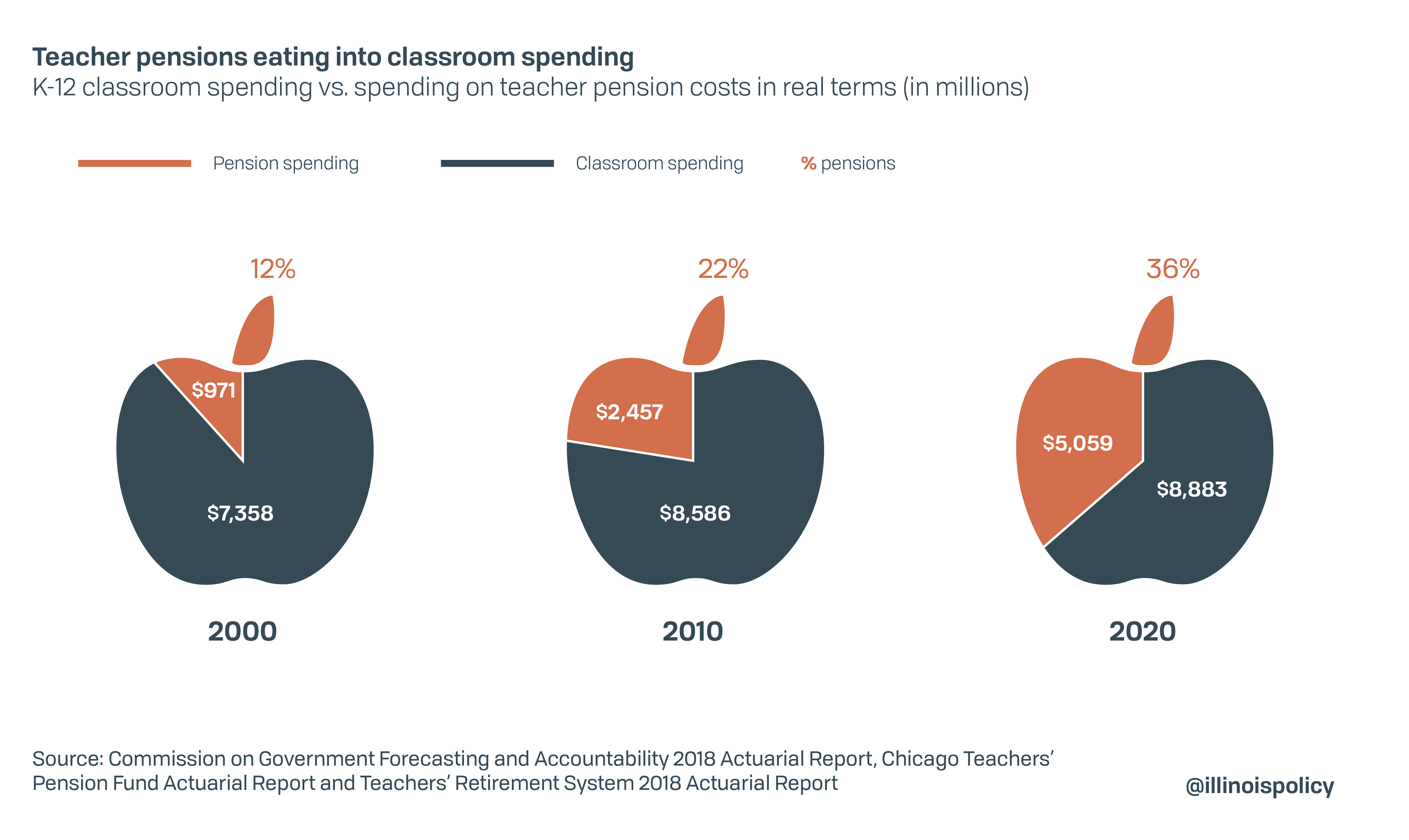Flat education spending is a cut when pensions, administration take more
Illinois Gov. J.B. Pritzker plans another year of flat education spending. The reality is the cash reaching classrooms is dwindling as pensions and administration eat more.
Despite calls for increased education spending to make up for learning losses associated with the COVID-19 pandemic, Illinois Gov. J.B. Pritzker’s budget proposal keeps education funding levels flat for the coming fiscal year.
Lawmakers have tried for years to throw more money at Illinois education to improve academic outcomes, but funding isn’t the problem. Money is spent in the wrong places, resulting in cuts to the classroom.
Funding earmarked for education continues to be diverted from classrooms and spent on pensions and excess district-level administration. From 2000 through 2020, spending on teacher and administrator pensions increased by 200%, while spending in the classroom rose just 20% for K-12 schools.
In reality, even if the governor holds education spending steady year over year or increases spending through federal aid, fewer and fewer resources will make their way to the classroom in the long term without structural reform.
At the state level, funding for education is allocated to both the Teachers’ Retirement System and the general education spending fund.
The state has promised to pay more than 75,000 teachers and administrator in the TRS system over $1 million each. Of those retirees, roughly 33% will each receive over $2 million. More than half will retire and start collecting payments before age 60.
The problem results from less being paid into the system than is promised to retirees. TRS only contains 40.5% of what is promised in payments, meaning the pension debt is $80.7 billion and more than half of what Illinois owes its five public pension systems.
Educators in the TRS system less than 30 years contribute on average just under $90,000 but receive payouts on average of $1.5 million dollars during their retirements. Educators with 30 years or more contribute over $113,000 on average but receive over $2.3 million from TRS during their retirements.
To make up for the large gaps between contributions and promised payout, money has to be diverted away from students and classrooms.
On top of the state’s pension problem, Illinois also spends too much money employing too many administrators in charge of too many school districts.
Illinois leads the Midwest with 852 school districts. More than 9,000 school administrators earn on average more than $100,000 annually, setting them up to receive lifetime pensions of $3 million or more. More than half of school districts in the state serve fewer than 1,000 students each.
Illinoisans spend more than double the national average per student just to cover administrative costs. In contrast, California has three times the student population of Illinois but spends nearly 40% less on administration.
These levels of administration redirect resources away from students and towards administrator salaries and retirements.
Maintaining similar levels of spending for the second year in a row while pension obligations and administration grow effectively cuts education spending on students.
Solutions to return this money to students and classrooms begin with real pension reform. Pritzker has decided to maintain “full required pension payment” obligations in the upcoming budget, however maintaining current levels of growth of pension payments is unsustainable for taxpayers.
Lawmakers should consider adopting a constitutional amendment to allow for reductions in future benefit growth for current workers and retirees which will bring future spending back in line with realistic projections.
Second, lawmakers should support House Bill 7 which creates the “School District Efficiency Commission.” This commission will be tasked with creating a list of recommended district level consolidations. Any recommendations must then be voted upon and passed by a majority of constituents of both school districts affected so one district cannot force consolidation on another.
Multiple levels of school district administration overburdens school budgets and diverts money away from teachers and away from students. Lawmakers have recognized this since 2019 when they unanimously passed a similar measure sponsored by state Rep. Rita Mayfield, D-Waukegan.
Maintaining the status quo accepts increasing costs per student as test scores underperform compared to neighboring states, and a state rank 19th nationally for education.
Pritzker’s “increased investments in education” are going to a pension system and district administration apparatus which causes taxpayers more and leaves behind those who most need the money – students and teachers.
